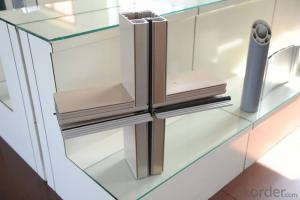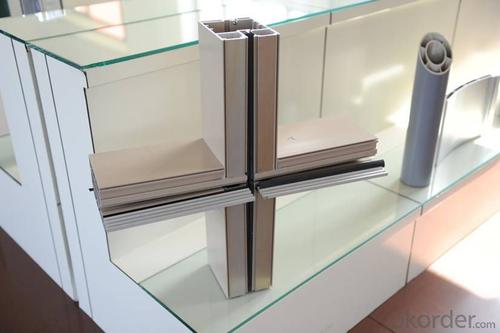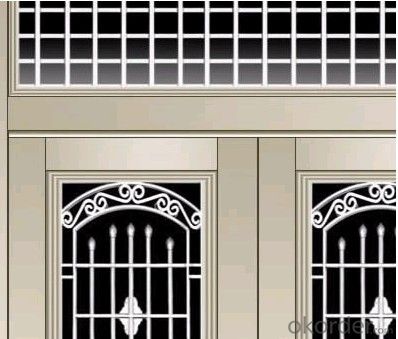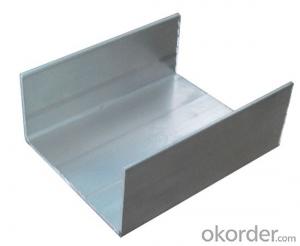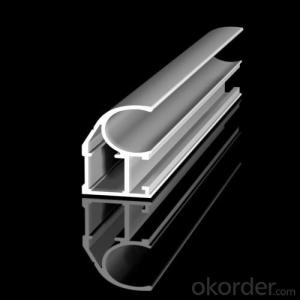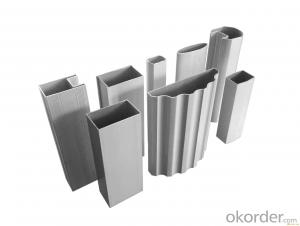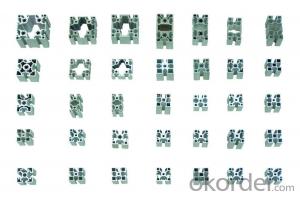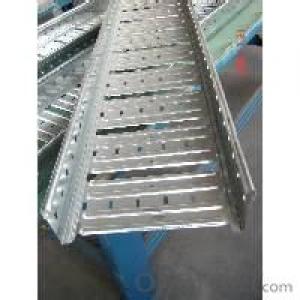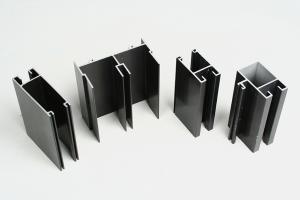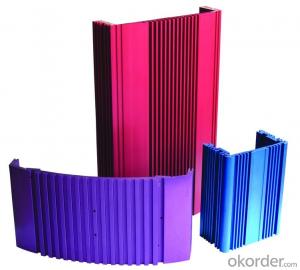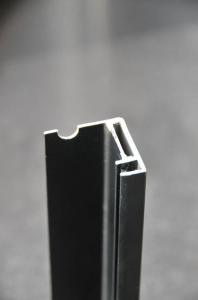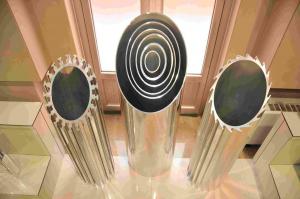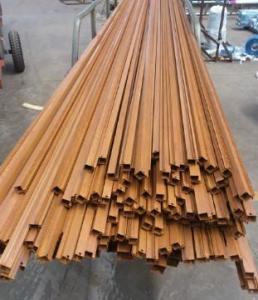Aluminum Gutter Profiles for Windows and Doors Extrusions
- Loading Port:
- Shanghai
- Payment Terms:
- TT OR LC
- Min Order Qty:
- 5 m.t.
- Supply Capability:
- 1000 m.t./month
OKorder Service Pledge
OKorder Financial Service
You Might Also Like
Specification
1. Structure of Aluminum Extrusion Profiles for Windows and Doors Description
Aluminum Extrusion Profiles for Windows and Doors is one semi-finished aluminium material. This coil can be rolled down to aluminium coil,sheet,circle ect. The alloy AA1050 is widly used in building, industry ect. Its weight is much lower than steel. So many customers choosed aluminium material instead of steel.
2. Specification of Aluminum Extrusion Profiles for Windows and Doors
Aluminum Extrusion Profiles for Windows and Doors | |
Main Specification | |
Alloy | AA1xxx (AA1050, AA1060, AA1070, AA1100 etc.) |
AA3xxx (AA3003, AA3004, AA3005, AA3105 etc.) | |
AA5xxx, AA6XXX (AA5052,AA5083, AA5754, AA6061, AA6062 etc.) | |
AA8xxx(AA8011, AA8006 etc.) | |
Temper | H14,H16, H18, H22, H24, H26, H32,O/F, T4, T6, T651 |
Thickmess | 0.01mm-100mm |
Width | 30mm-1700mm |
Standard | GB/T 3880-2006/ASTM |
Special specification is available on customer's requirement | |
3. Application of Aluminum Extrusion Profiles for Windows and Doors
(1).Interior: wall cladding, ceilings, bathrooms, kitchens and balconies, shutters, doors...
(2).Exterior: wall cladding, facades, roofing, canopies, tunnels,column covers , renovations...
(3).Advertisement: display platforms, signboards, fascia, shop fronts...
4. Feature of Aluminum Extrusion Profiles for Windows and Doors
Surfact Quality :
Be free from Oil Stain, Dent, Inclusion, Scratches, Stain, Oxide Dicoloration, Breaks, Corrosion, Roll Marks, Dirt Streaks and other defect which will interfere with use,
Mechenical Property:
Chemical Composite and Mechanical Property
5. Certificate of Aluminum Extrusion Profiles for Windows and Doors
SGS and ROHS(if client request, paid by client), MTC(plant provided), Certificate of Origin(FORM A, FORM E, CO), Bureau Veritas and SGS (if client request, paid by client), CIQS certificate
6. Image of Aluminum Extrusion Profiles for Windows and Doors
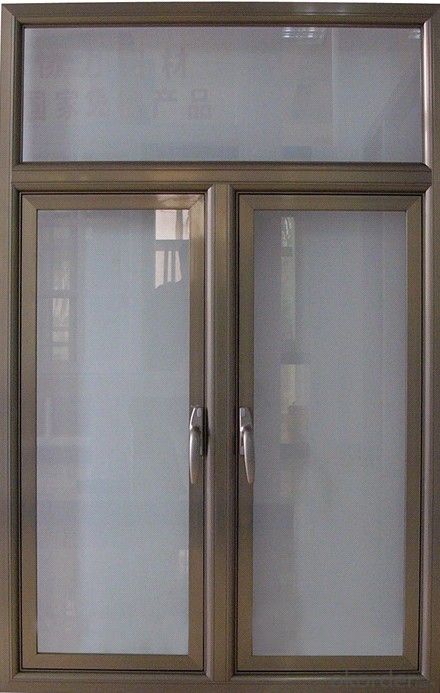
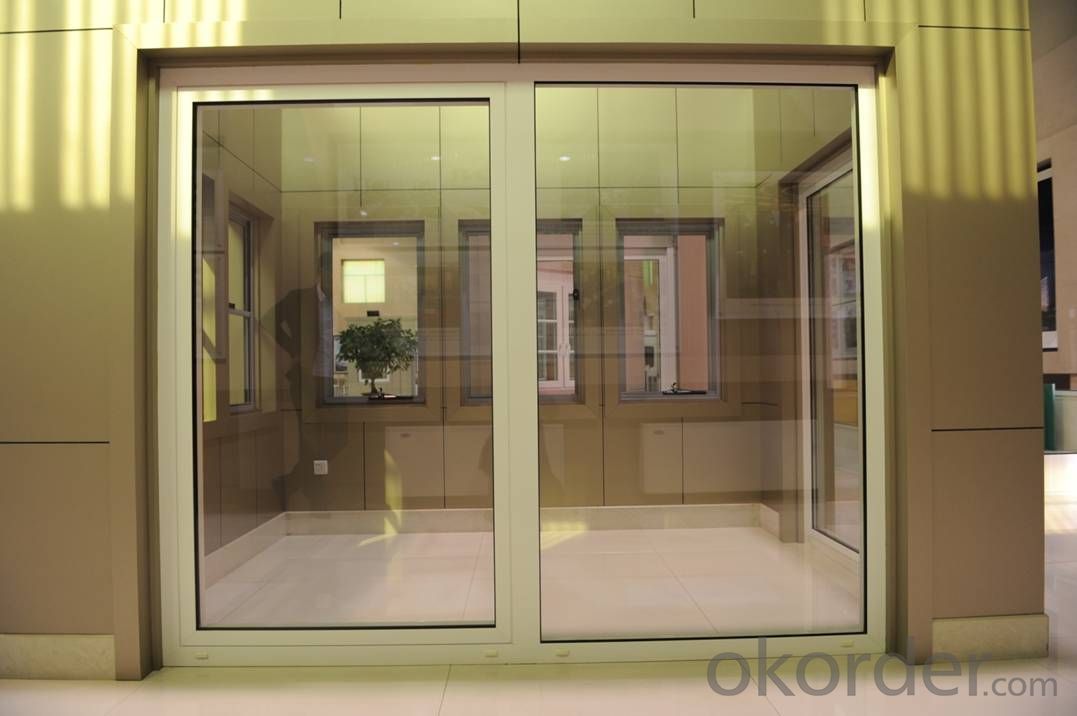
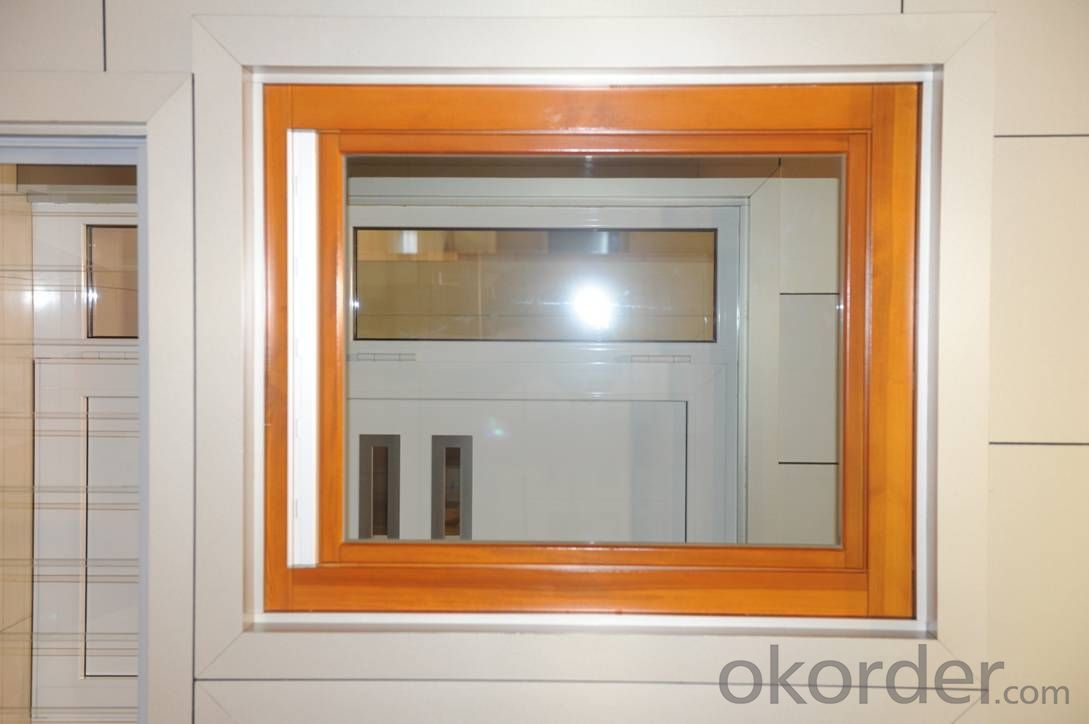
7. Package and shipping of Aluminum Extrusion Profiles for Windows and Doors
First, plastic cloth with drying agent inside; Second, Pearl Wool ; Third, wooden cases with dry agent , fumigation wooden pallets, aluminum surface could cover blue PVC film
8. FAQ
1) What is the delivery time?
Depends on actual order, around 20 to 35 days
2) What is the QC system:
We have QC staff of 20 persons and advanced equipment, each production is with MTC traced from Aluminum ingot lot.
3) What market do you mainly sell to?
Australia, America, Asia, Middle East, Western Europe, Africa etc
- Q: Can aluminum profiles be used for creating protective enclosures?
- Indeed, protective enclosures can be fashioned using aluminum profiles. Aluminum, being a lightweight, long-lasting, and corrosion-resistant substance, proves itself fitting for a plethora of purposes, including protective enclosures. By effortlessly fabricating and assembling aluminum profiles, one can generate tailored enclosures of diverse dimensions and forms. They grant exceptional structural integrity and endure even the harshest environmental circumstances. Furthermore, in the event that efficient heat dispersal is necessary, aluminum profiles present commendable thermal conductivity. All in all, the versatility, strength, and durability of aluminum profiles render them a favored choice for the creation of protective enclosures.
- Q: What are the different shapes available for aluminum profiles?
- There are various shapes available for aluminum profiles, each designed to suit different applications and requirements. Some commonly used shapes include: 1. T-Slot profiles: These profiles have a T-shaped cross-section, with slots on one or more sides. They are widely used in construction, robotics, and industrial applications, as they allow for easy assembly and integration of other components. 2. Square profiles: These profiles have a square-shaped cross-section and are often used for structural applications. They provide excellent strength and rigidity, making them suitable for building frames, machine bases, and support structures. 3. Rectangular profiles: Similar to square profiles, rectangular profiles have a rectangular-shaped cross-section. They offer versatility and can be used in a wide range of applications, including enclosures, partitions, and conveyor systems. 4. Round profiles: These profiles have a circular cross-section and are commonly used in applications that require a smooth and aesthetically pleasing finish. They are often used for architectural purposes, such as handrails, furniture, and decorative elements. 5. L-Shaped profiles: L-shaped profiles have a 90-degree angle and are often used for corner joints, edges, and brackets. They provide structural support and stability and are commonly used in construction and manufacturing industries. 6. U-Shaped profiles: U-shaped profiles have a U-shaped cross-section, resembling an open channel. They are frequently used in applications that require a protective housing or a channel to guide cables, wires, or other components. 7. Custom profiles: Apart from the standard shapes mentioned above, aluminum profiles can also be custom-designed and manufactured to meet specific project requirements. This allows for greater flexibility and ensures the aluminum profiles perfectly fit the intended application. Overall, the availability of different shapes for aluminum profiles enables engineers, designers, and manufacturers to select the most appropriate shape for their specific needs, ensuring optimal performance, functionality, and aesthetics.
- Q: How do aluminum profiles perform in load-bearing structures?
- Aluminum profiles are known for their excellent performance in load-bearing structures. Due to their high strength-to-weight ratio, aluminum profiles offer significant advantages over other materials in terms of structural integrity and overall weight reduction. The inherent strength of aluminum profiles enables them to support heavy loads, making them suitable for various load-bearing applications. Whether it is in buildings, bridges, or industrial structures, aluminum profiles can effectively withstand and distribute heavy loads, ensuring reliable and safe performance. Additionally, aluminum profiles have exceptional corrosion resistance, which is crucial for load-bearing structures exposed to harsh environments or outdoor conditions. This corrosion resistance ensures the longevity and durability of the structure, reducing maintenance and replacement costs in the long run. Furthermore, aluminum profiles are highly versatile and can be easily customized to meet specific design requirements. They can be extruded into various shapes and sizes, allowing for efficient integration into complex load-bearing structures. This versatility also enables the use of aluminum profiles in unique architectural designs, enhancing the aesthetics of the structure. Another advantage of aluminum profiles in load-bearing structures is their lightweight nature. Compared to traditional materials like steel, aluminum profiles are significantly lighter, resulting in easier and more cost-effective transportation, installation, and overall construction process. This makes aluminum profiles an ideal choice for projects where weight reduction is a priority. In conclusion, aluminum profiles excel in load-bearing structures due to their high strength-to-weight ratio, corrosion resistance, versatility, and lightweight properties. These characteristics make aluminum profiles a reliable and efficient choice for various load-bearing applications, providing durability, longevity, and cost-effectiveness to the overall structure.
- Q: Can aluminum profiles be used in agricultural greenhouse manufacturing?
- Indeed, agricultural greenhouse manufacturing can utilize aluminum profiles. Aluminum, known for its lightweight and durable nature, possesses corrosion resistance, rendering it a suitable material for greenhouse constructions. By employing aluminum profiles, one can establish the greenhouse's framework, which offers both structural support and stability. Furthermore, the flexibility and ease of customization and assembly of aluminum profiles facilitate various designs for greenhouses. Ultimately, incorporating aluminum profiles in agricultural greenhouse manufacturing guarantees enduring and efficient structures for plant cultivation.
- Q: What is the thickness of the aluminum alloy window frame?
- The national standard "Aluminum Alloy window" has been specified, aluminum wall thickness not less than 1.2 mm. In other words, the main wall thickness of ordinary aluminum alloy window structure should not be less than 1.2 mm, the main wall thickness of the door structure profiles should not be less than 2 mm.
- Q: How do aluminum profiles provide structural stability?
- Aluminum profiles provide structural stability through their inherent properties and design characteristics. Firstly, aluminum is a lightweight yet strong material, making it ideal for constructing various structures. Its high strength-to-weight ratio means that it can support heavy loads while minimizing the overall weight of the structure. Additionally, aluminum profiles can be designed with various shapes and cross-sections, allowing for optimal load distribution and structural integrity. These profiles can be extruded into different shapes, such as I-beams, T-sections, or rectangular profiles, which can provide enhanced strength and rigidity to the structure. Moreover, aluminum has excellent corrosion resistance, which ensures that the profiles remain durable and structurally sound even in harsh environments. This resistance to corrosion eliminates the need for frequent maintenance and extends the lifespan of the structure. Furthermore, aluminum profiles can be easily fabricated and assembled, allowing for efficient and cost-effective construction. They can be cut, drilled, welded, or fastened together to create complex structures with precise dimensions. This flexibility in fabrication and assembly ensures that the profiles can be tailored to meet specific design requirements and provide optimal structural stability. In conclusion, aluminum profiles provide structural stability through their lightweight yet strong nature, versatile design options, corrosion resistance, and ease of fabrication and assembly. These properties make aluminum profiles a preferred choice in various industries, including construction, transportation, aerospace, and many others.
- Q: How are aluminum profiles cut and shaped?
- Aluminum profiles are cut and shaped using various methods such as sawing, milling, drilling, and bending. Sawing is the most common method, where a circular saw or bandsaw is used to cut the aluminum profiles to the desired length. Milling involves removing excess material using a rotating cutting tool to create specific shapes and designs. Drilling is used to create holes in the profiles using a drill bit. Lastly, bending is employed to shape the profiles by applying force to bend them into the desired angles or curves.
- Q: What is the difference between 6063-T5 and 6061-T6 aluminum profiles?
- 6063 Aluminum Alloy belongs to Aluminum Alloy heat treatment, the main alloying elements as magnesium and silicon, the main strengthening phase is Mg2Si, with moderate strength, high corrosion resistance, no stress corrosion cracking tendency, good welding performance and corrosion resistance of weld zone constant etc.. The aluminum alloy has wide quenching range and low sensitivity to quenching temperature, and the thin-wall parts can be realized by wind quenching (strong wind cooling). Alloys are widely used in the frame and load-bearing panels of the construction and automotive industries. There is a relatively large tendency of over ageing in the welding process of this alloy. The direct reason is that the strengthening phase has been changed by the temperature.
- Q: Do aluminum profiles come with any certifications?
- Yes, aluminum profiles can come with certifications depending on their intended use and industry standards. Some common certifications for aluminum profiles include ISO 9001, which ensures quality management systems are in place, ISO 14001, which certifies environmental management systems, and OHSAS 18001, which verifies occupational health and safety management systems. Additionally, aluminum profiles used in construction may have certifications such as the CE marking, which indicates compliance with European Union safety, health, and environmental protection requirements. It is important to check with the manufacturer or supplier to determine if the specific aluminum profiles you are interested in come with any certifications.
- Q: Do aluminum profiles require any special tools or equipment for installation?
- Yes, aluminum profiles may require special tools and equipment for installation. Some of the tools commonly used include a miter saw or a circular saw with a non-ferrous metal blade for cutting the profiles to the desired length. A drill with the appropriate drill bits is necessary for creating holes for screws or other fasteners. Clamps or a vise may be needed to hold the profiles securely in place during installation. Additionally, a level, measuring tape, and a square are essential for ensuring accurate and precise installation. It is also important to have safety equipment such as safety glasses and gloves to protect against any potential hazards during the installation process. Overall, having the right tools and equipment is crucial to achieve a successful and efficient installation of aluminum profiles.
Send your message to us
Aluminum Gutter Profiles for Windows and Doors Extrusions
- Loading Port:
- Shanghai
- Payment Terms:
- TT OR LC
- Min Order Qty:
- 5 m.t.
- Supply Capability:
- 1000 m.t./month
OKorder Service Pledge
OKorder Financial Service
Similar products
Hot products
Hot Searches
Related keywords
